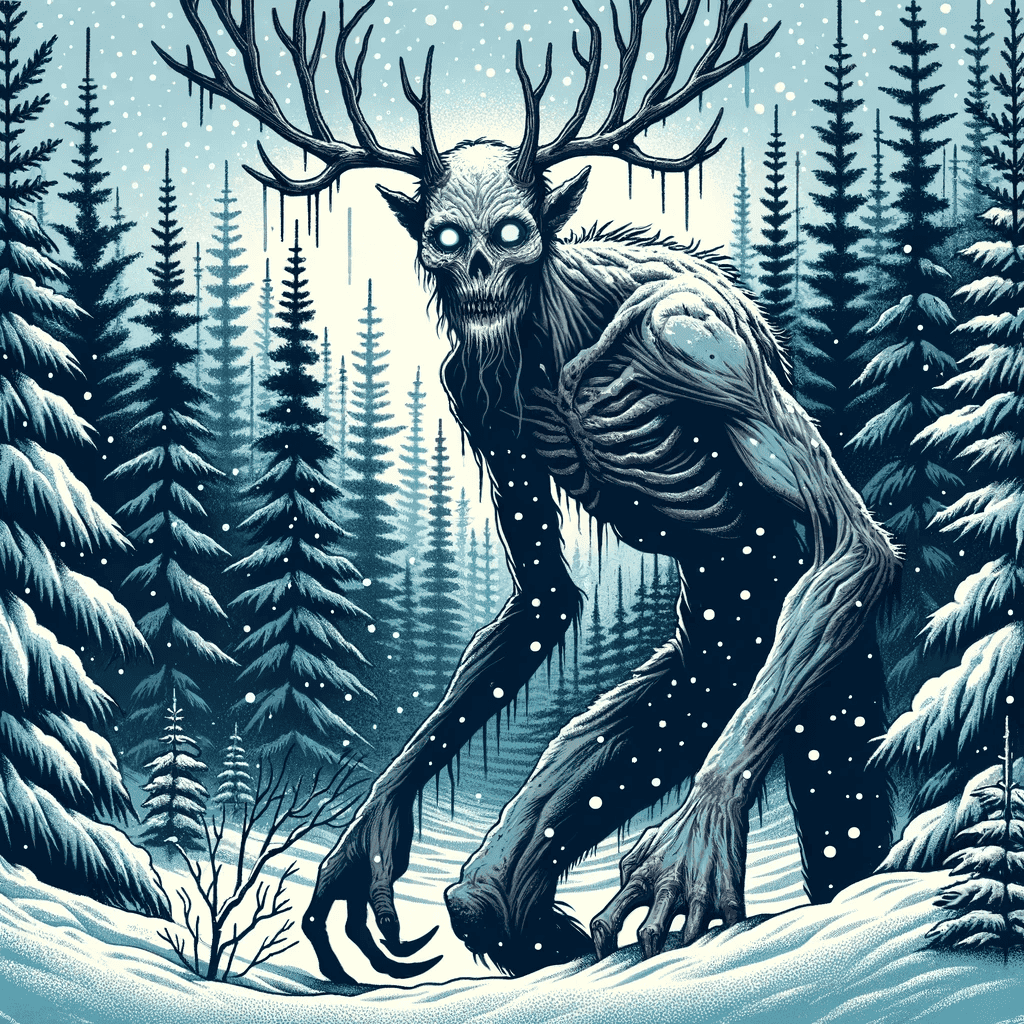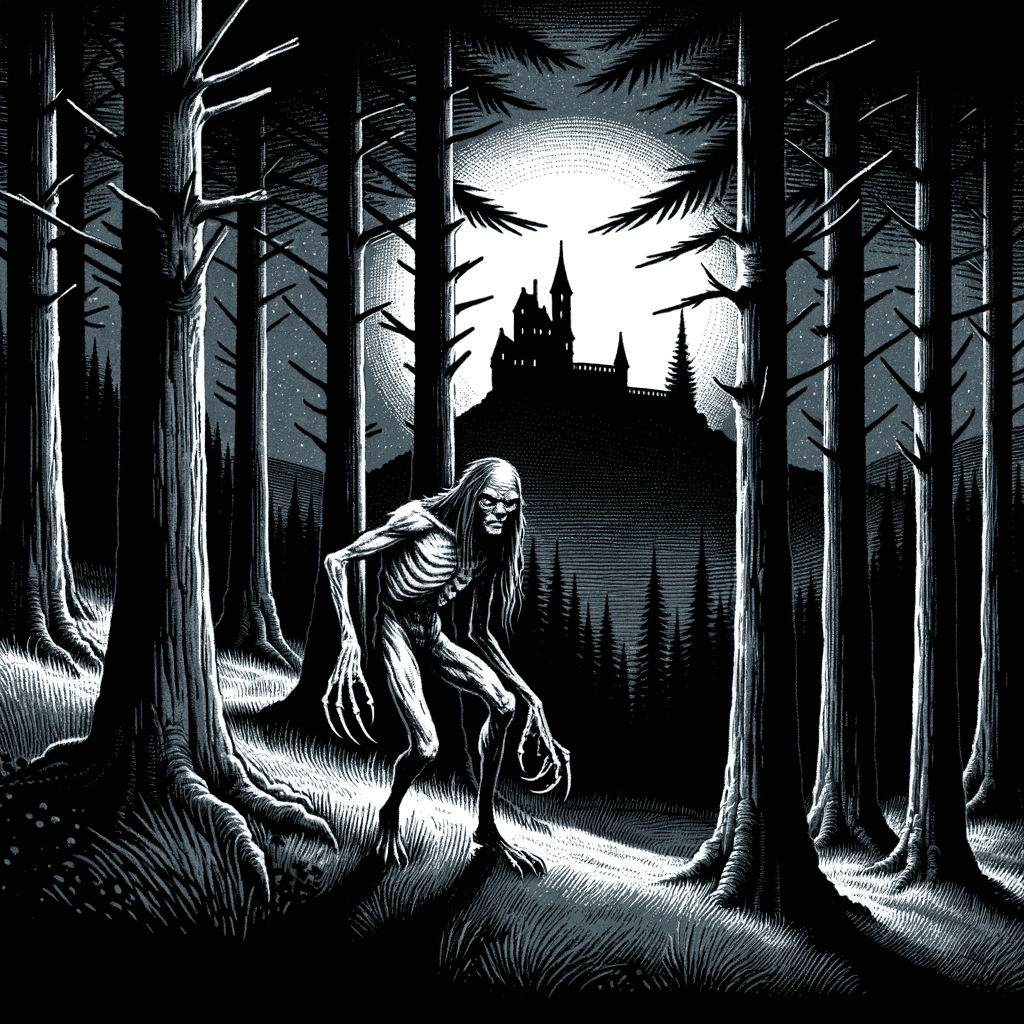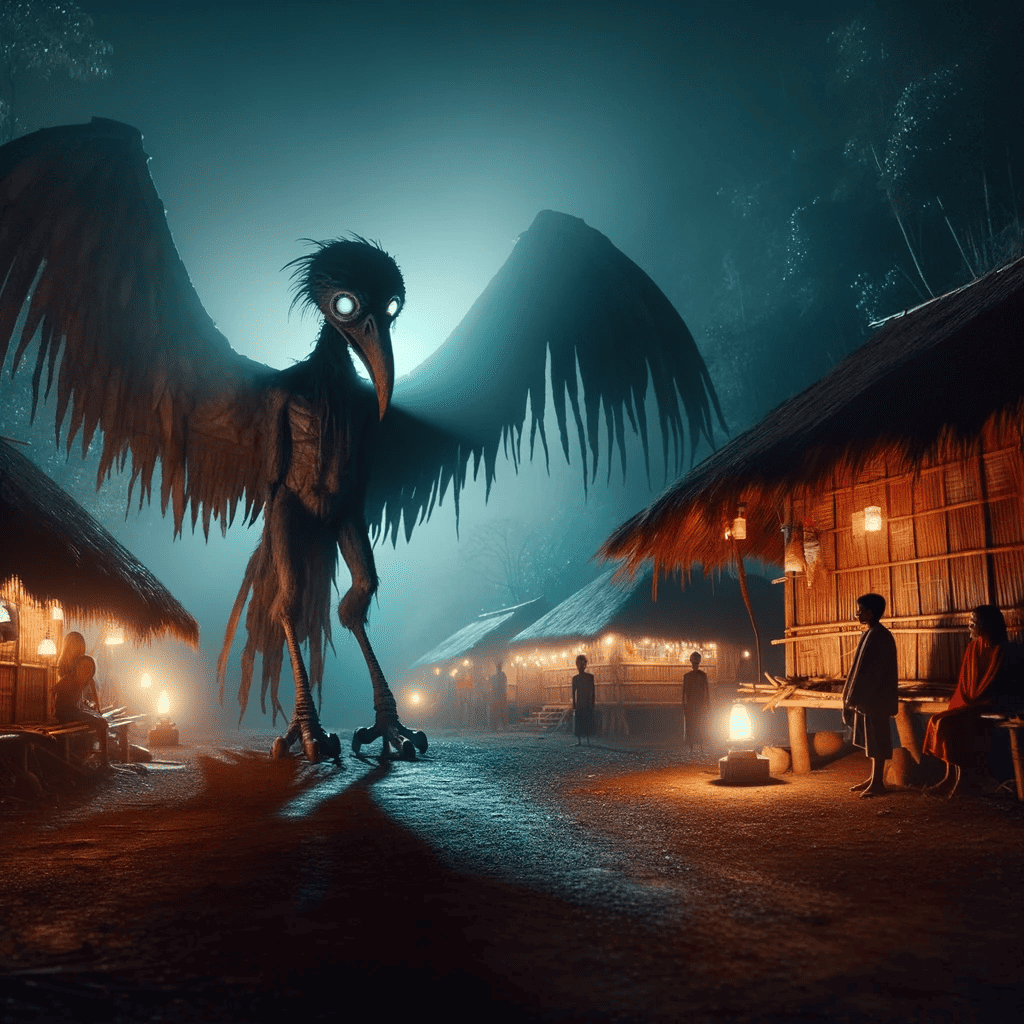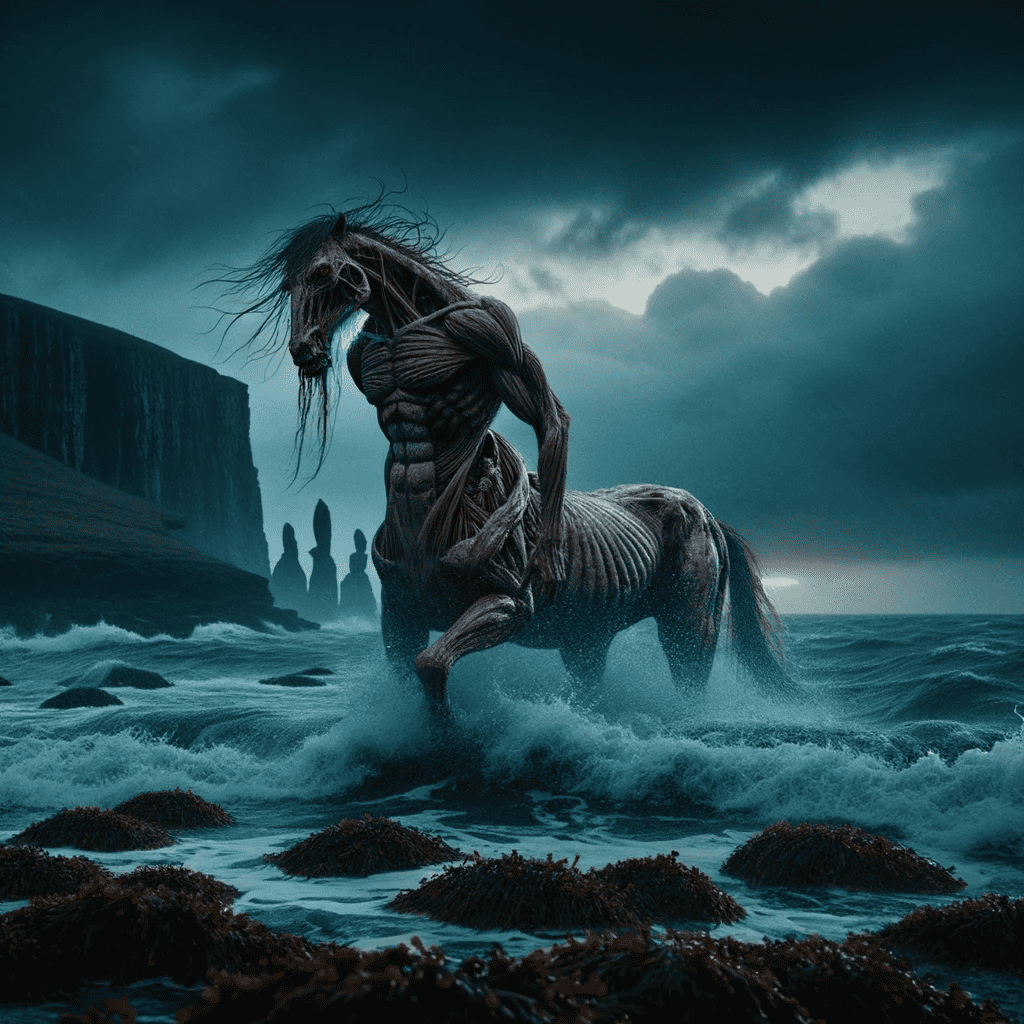Halloween—a night where the veil between the living and the supernatural supposedly thins, inviting all sorts of ghastly creatures to roam the streets alongside trick-or-treaters. While the typical fare of vampires, witches, and zombies have long held a monopoly on our fears, the world’s folklore holds plenty of other lesser-known but equally spine-tingling monsters.
From the icy expanses of North America to the mysterious waters of Australia, and from the haunted landscapes of Romania to the enigmatic realms of Japanese myth, our planet is teeming with legends of creatures that are ghastly and terrifying. This Halloween, let’s take a detour from the well-trodden path and venture into the eerie unknown.
Buckle up as we introduce you to eight ghastly creatures from around the world that are perfect for adding a fresh twist to your All Hallows’ Eve.
The eerie tales of Japan’s Yūrei

Yūrei are essentially the Japanese equivalent of ghosts or spirits. They are souls who are unable to find peace for some reason. Because of this, they linger on in the physical world, often bringing harm to those who come across specific places. Their hands dangle lifelessly from the wrists, which are held outstretched with the elbows near the body. They typically lack legs and feet, floating in the air.
There is more than one type of yūrei, but the classic image is that of a woman in a white kimono with long, unkempt hair covering her face, and she’s often seen as a floating apparition. Yūrei are generally tied to a specific emotion or purpose, like vengeance (Onryō) or love (Ubume), which keeps them anchored to the earthly plane. Stories of Onryō often serve as cautionary tales about the consequences of treating others poorly.
Another type of Yūrei is the Ubume. An Ubume is a spirit of a woman who died in childbirth or shortly after giving birth. She may appear to passersby, asking them to hold her child for a moment, only for the baby to grow heavier and heavier until the person can no longer hold it. Though frightening, the Ubume’s actions are generally not intended to harm but rather reflect her own sorrow or desire to be close to a living child.
The chilling legends of the Wendigo from Algonquian folklore

Originating from the folklore of various Algonquian-speaking Native American and First Nations tribes, the Wendigo is often depicted as a malevolent, cannibalistic, supernatural being. It’s said to roam forests and snowy landscapes, and stories about it serve as a cautionary tale against greed and other social taboos, particularly cannibalism.
The Wendigo is often described as a tall, emaciated creature with an insatiable hunger for human flesh. Its appearance can vary, but it is commonly described as having antlers or horns, long, claw-like fingers, and an aura of decay or cold around it. In some interpretations, Wendigos are humans who have transformed into these terrifying creatures as a result of consuming human flesh.
The Wendigo is part of the traditional belief system of a number of Algonquin-speaking peoples, including the Ojibwe, the Saulteaux, the Cree, the Naskapi, and the Innu. However, while these cultures can have somewhat varying depictions of the Wendigo, it is usually characterized as a malevolent, cannibalistic, supernatural being associated with winter, the north, coldness, famine, and starvation.
Stories of La Llorona, the weeping woman from Latin American myth

La Llorona is typically described as a tall, thin spirit with long flowing hair, dressed in white. She is often heard weeping or wailing, and her cries are said to bring misfortune. Those who hear her are advised to run away immediately, as encountering her can be dangerous or even a life-threatening situation.
In the most well-known version of the story, La Llorona was a beautiful woman named Maria. When she found out her husband was cheating on her, she drowned her children in a river as an act of revenge or despair. Realizing the gravity of her actions, she is said to have drowned herself as well. However, she is not permitted to enter the afterlife until she finds her children, so she roams waterways, weeping and wailing, searching for them.
Parents often use the story of La Llorona to caution their children against staying out too late or playing near dangerous waters. Originating from Mexican folklore and popular in various Latin American cultures, the tale of La Llorona has been passed down through generations and varies from region to region.
The amphibious aboriginal Bunyip

This creature is a more fearsome entity from Aboriginal tales. It’s said to lurk in swamps, billabongs, creeks, and waterholes. Descriptions of the Bunyip vary widely, but it’s often depicted as having a dog-like face, dark fur, flippers, and a loud, terrifying roar. Other descriptions liken it to a giant snake or even a mixture of various animals. What remains consistent is its role as a fearsome water-dwelling creature.
The Bunyip holds significant cultural importance for Indigenous Australians, often serving as a warning of the dangers associated with water bodies. In some communities, the Bunyip is also seen as a protector of the land and waterways, serving a dual role as both a cautionary figure and a guardian.
The Romanian Strigoi, more than a vampire

The Strigoi is considered a troubled soul, unable to find peace in the afterlife and returning from the dead to harm the living. In many stories, Strigoi are associated with vampires, but they can also possess various magical abilities, such as shape-shifting, invisibility, or the power to manipulate weather. Some tales describe them as being particularly interested in attacking their living family members or village members.
There are two types of strigoi, the living version and the undead one. The living ones are living people with evil tendencies who are destined to become Strigoi after they die. They are believed to possess various dark powers and abilities while still alive. The undead ones are the reanimated corpses who return to life to harm their living relatives and neighbors. They are the closest to the Western concept of a vampire.
The concept of the Strigoi has been adapted into various forms of media, from literature to film and television, often becoming entangled with the broader Western vampire myth. However, the Strigoi retains distinct characteristics that set it apart.
The disturbingly malevolent Filipino Aswang

The Aswang is a shape-shifting monster from Filipino folklore. The Aswang is often depicted as a regular human by day and transforms into a monster by night. It is known for its shape-shifting abilities, taking on the forms of animals like dogs, cats, or pigs. The creature’s diet can vary; some versions of the Aswang suck blood like vampires, while others prefer to eat human or animal entrails. In some tales, the Aswang can even suck out a person’s internal organs using a long, proboscis-like tongue.
Some types of Aswang can separate their upper body from their lower half and fly around, searching for victims. It’s known for its fondness for eating unborn children, which they suck out of a mother’s womb using its long tongue.
The seductress spider Jorōgumo

Translating to “woman spider” the Jorōgumo is another creature from Japanese folklore that can transform from a beautiful woman into a giant spider. She lures victims with her charm and then binds them in her webs to consume later.
In her spider form, she’s just another spider—albeit a large and powerful one. However, when she transforms into her human guise, she becomes a master of deceit and manipulation. In many stories, she lures victims to her lair with her beauty or by playing musical instruments like the biwa, a traditional Japanese lute. Once her victims are entranced, she reverts to her spider form to ensnare them in her webs and consume them.
In some stories, however, she is portrayed in a more positive light. There is one legend in which a man spares a spider, and later on, a beautiful woman comes to repay the kindness, revealing herself as the spider he saved.
The Scottish Nuckelavee from Orkney Folklore

A creature of pure malice, the Nuckelavee is a skinless centaur-like being, with a man’s torso attached to a horse’s back. Its breath could wilt crops and sicken livestock. It’s said to have a particular hatred for freshwater.
The Nuckelavee is especially feared by those who make their livelihoods from the sea or the land because it can both ruin crops and bring storms. According to legend, the Nuckelavee is confined to the sea during the summer, but come winter, it is free to roam the land and spread its malevolence.
In many ways, the Nuckelavee can be seen as an embodiment of the harsh environmental conditions that the people of the Orkney Islands faced, from destructive storms to failed crops. It’s a monstrous representation of natural disasters and the fear of the unknown.
All images in this article are AI-generated unless otherwise specified.









